Abstract
Pigeons were trained under concurrent chain schedules in which the initial links were equal aperiodic schedules and the terminal links were fixed-interval schedules. Choice proportions in the initial links were measured in 26 experimental conditions. The data showed the inadequacy of previous models of concurrent chain performance. A new model was suggested in which choice is a joint function of terminal-link times, overall reinforcement rates, and terminal-link entries. This model accounted for 94% of the variance in the present data and for substantial percentages of the variance in previously reported data. The model simplifies to matching between response ratios and obtained reinforcement rate ratios for simple concurrent schedule performance.
Full text
PDF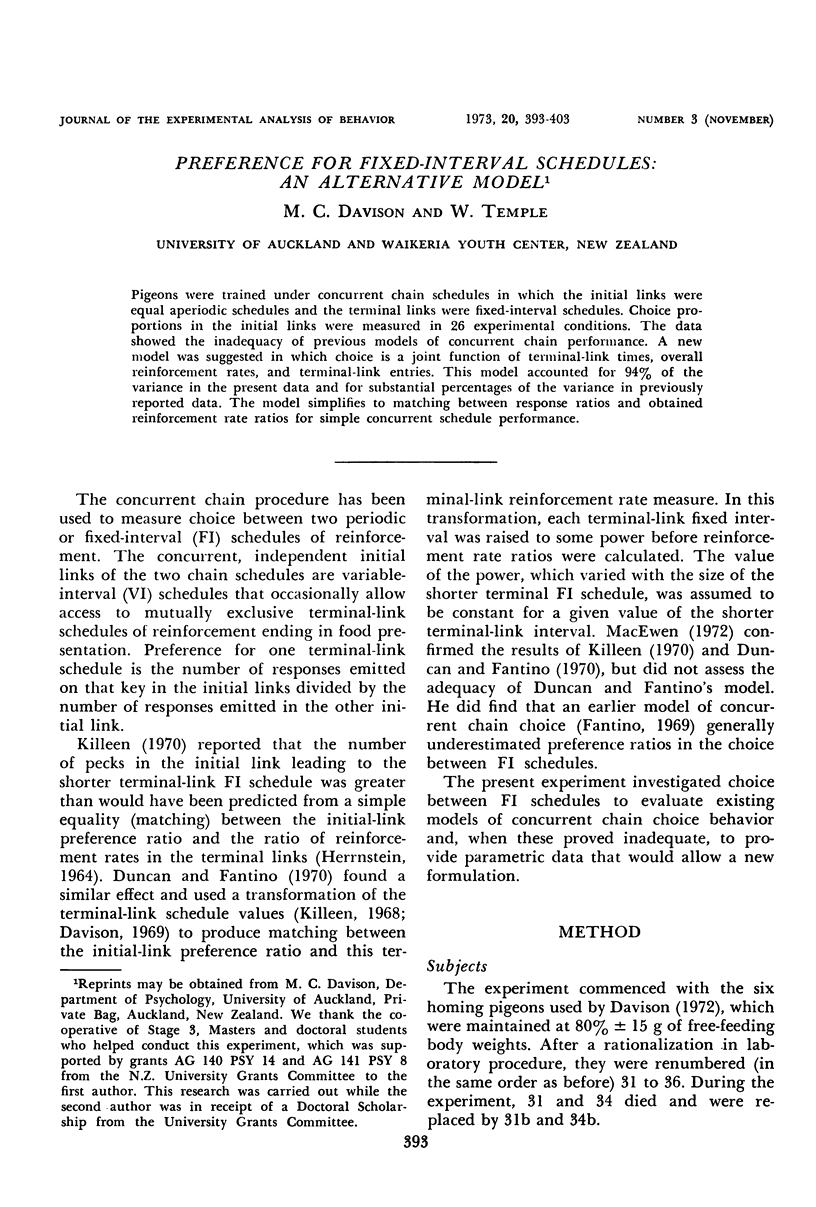
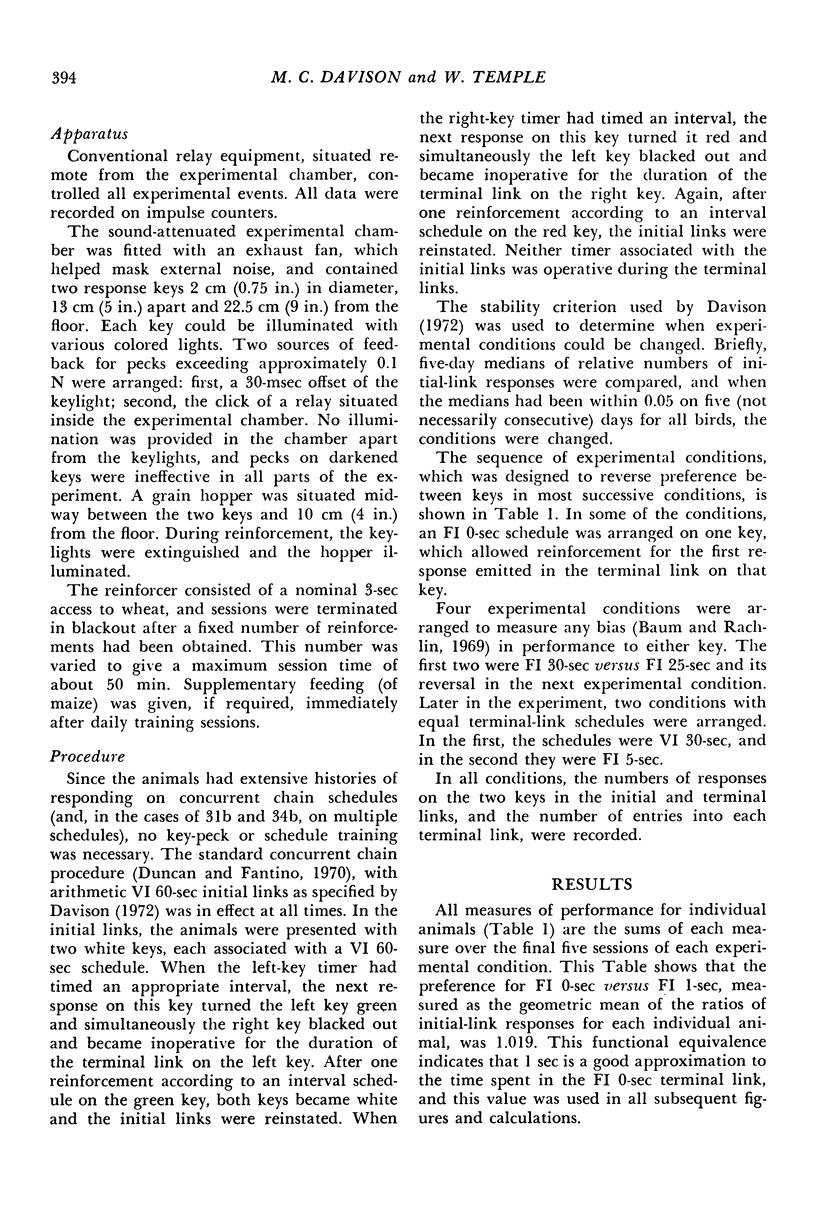
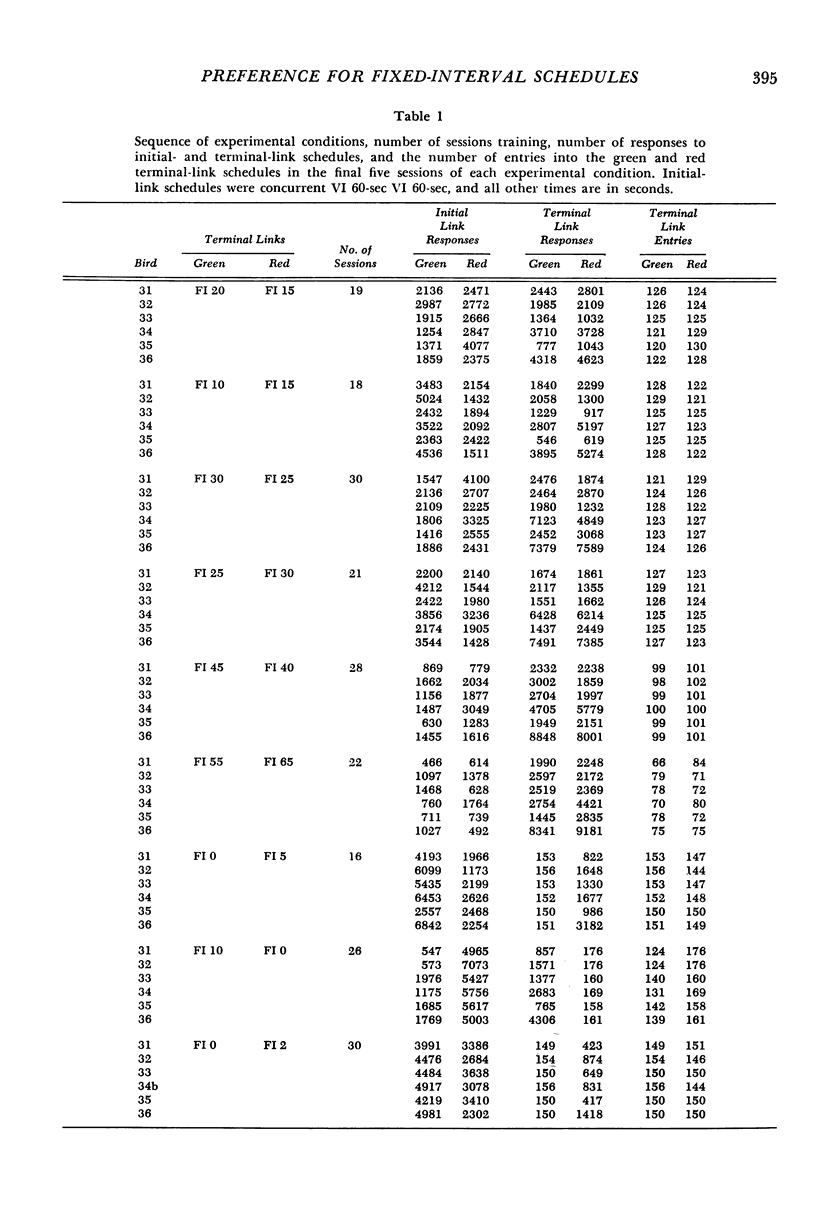
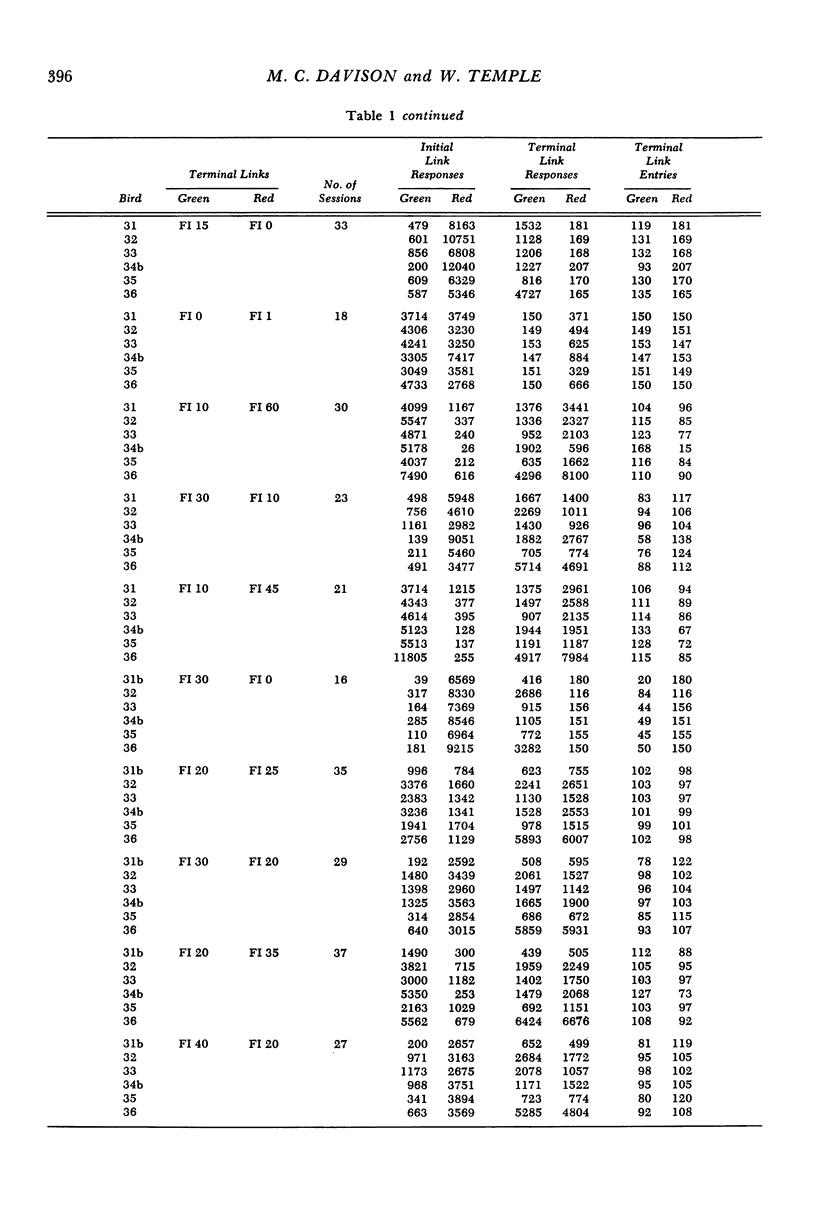
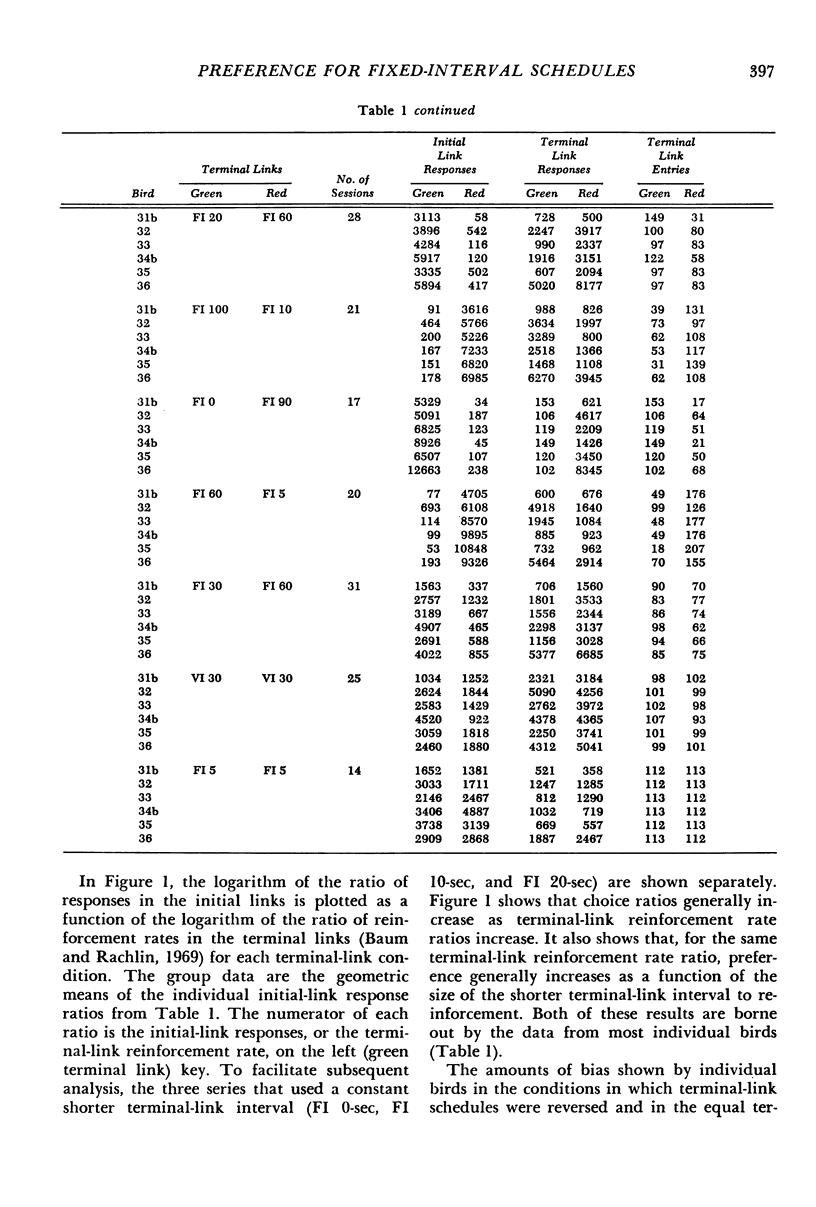
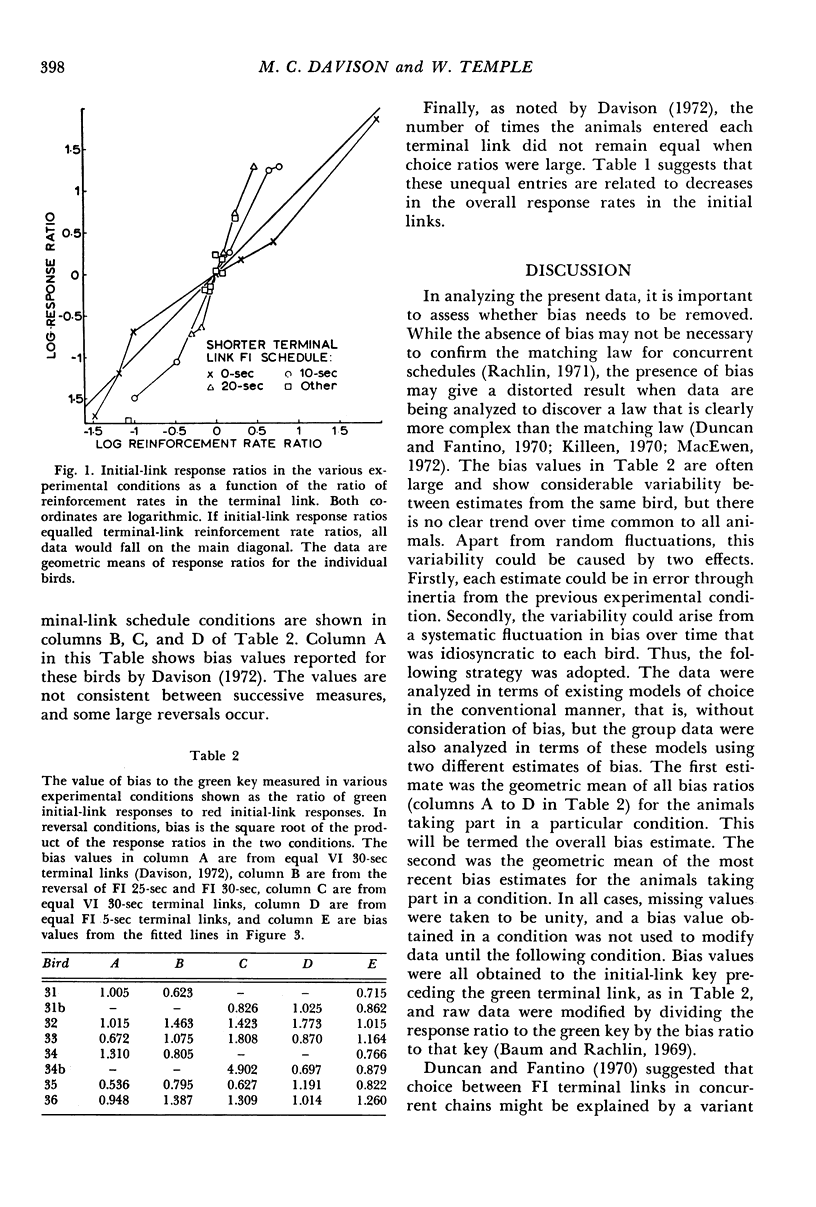
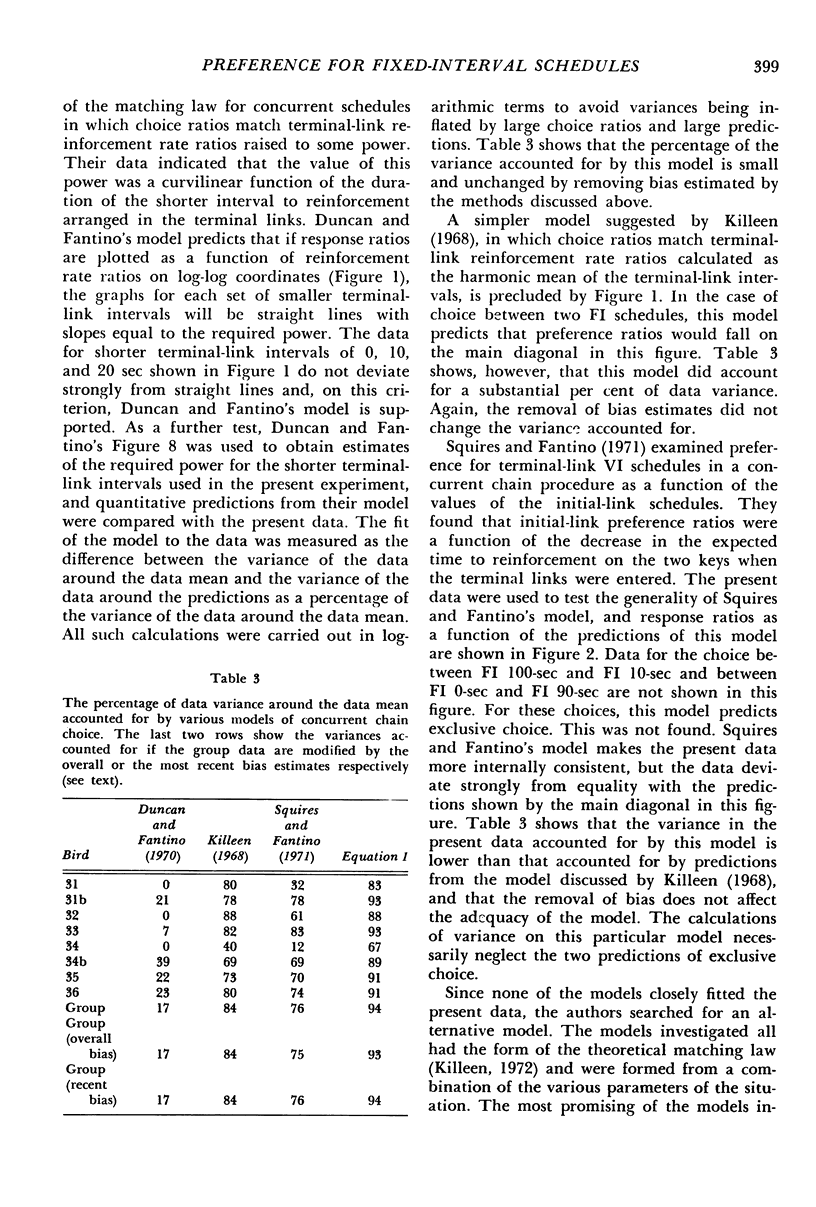
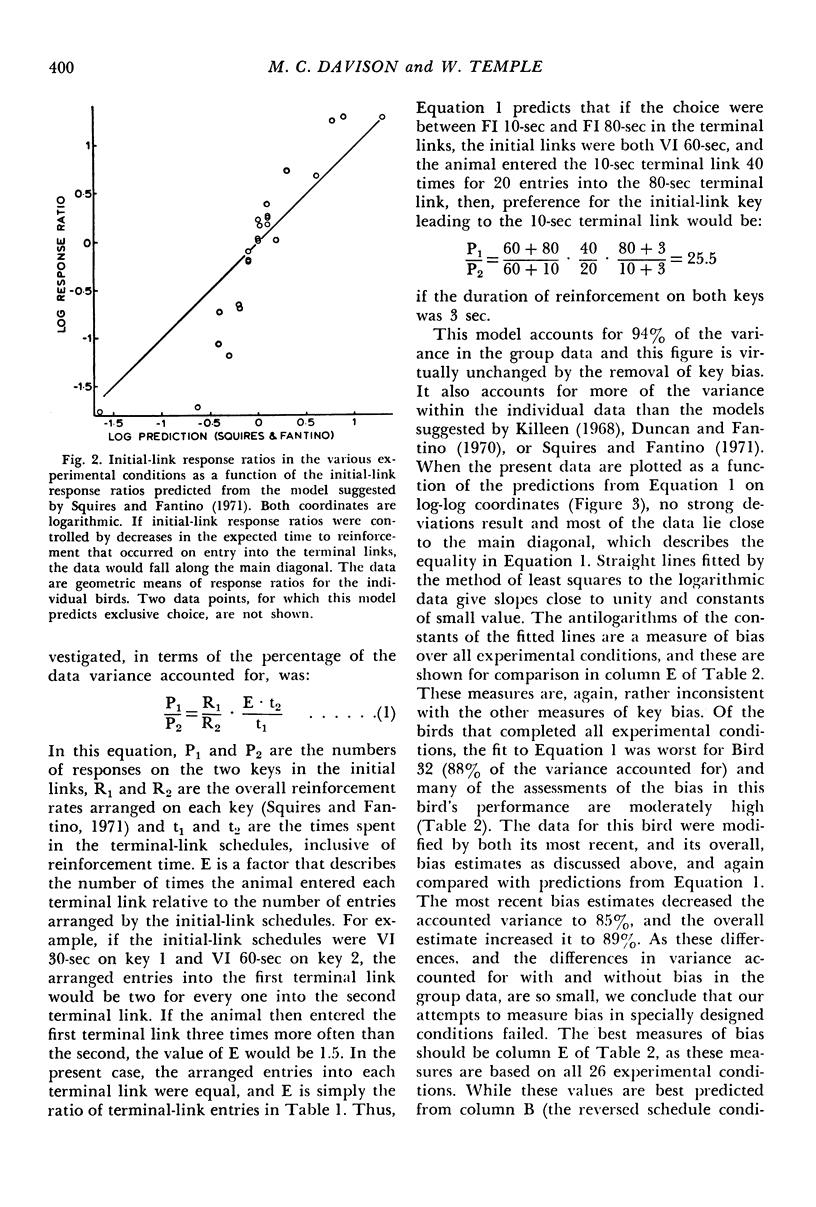
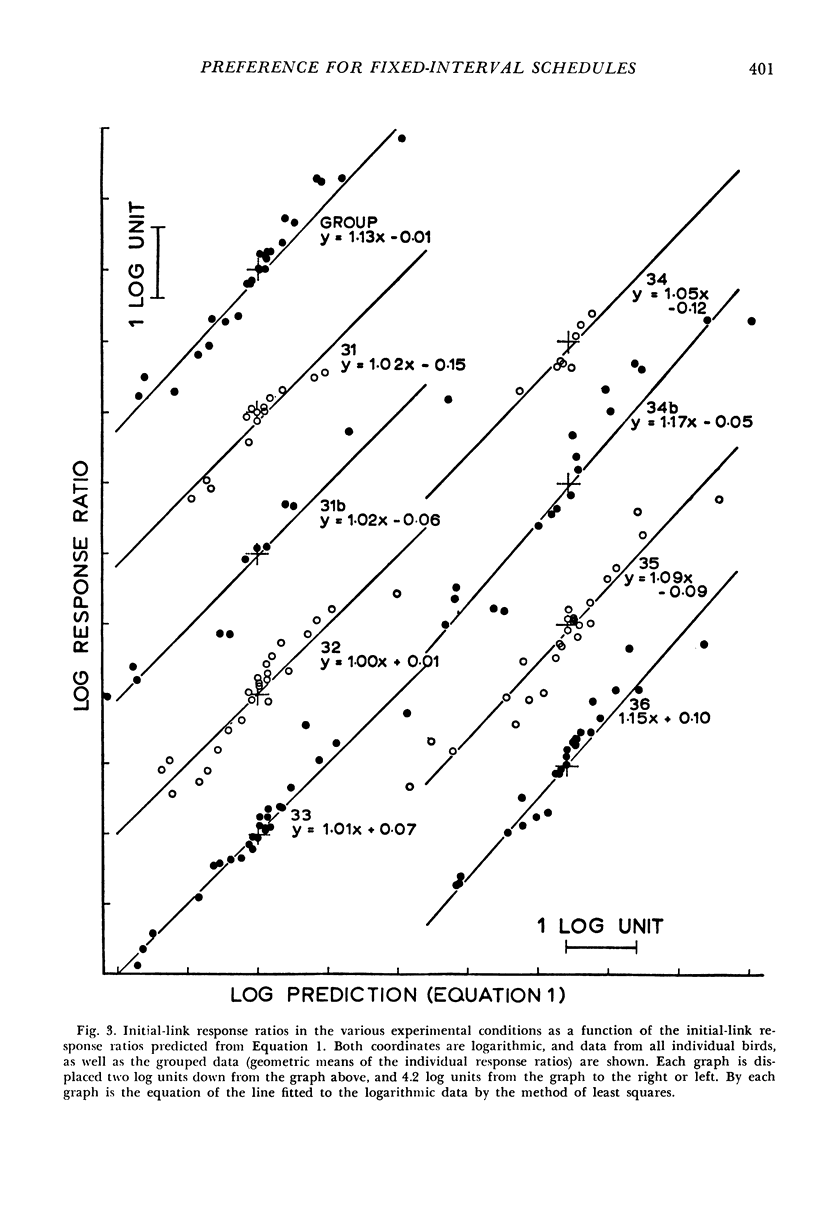
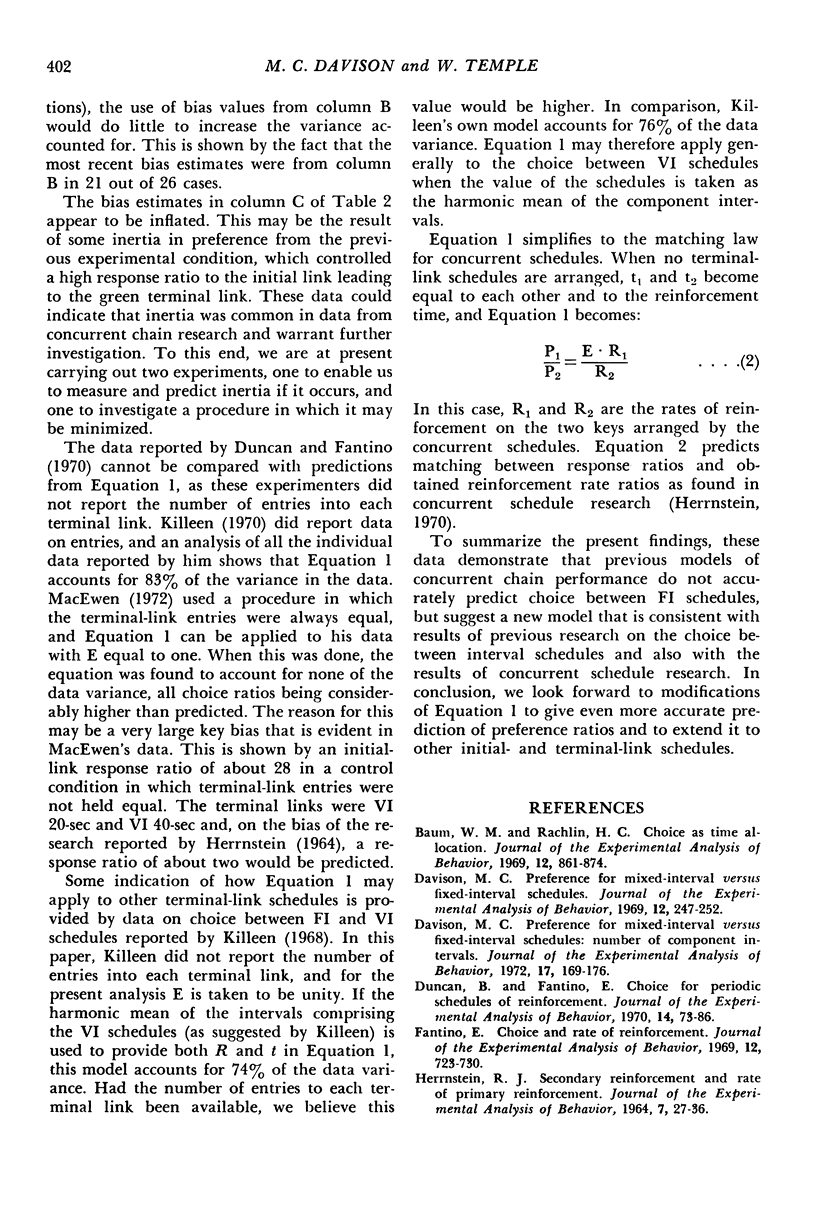
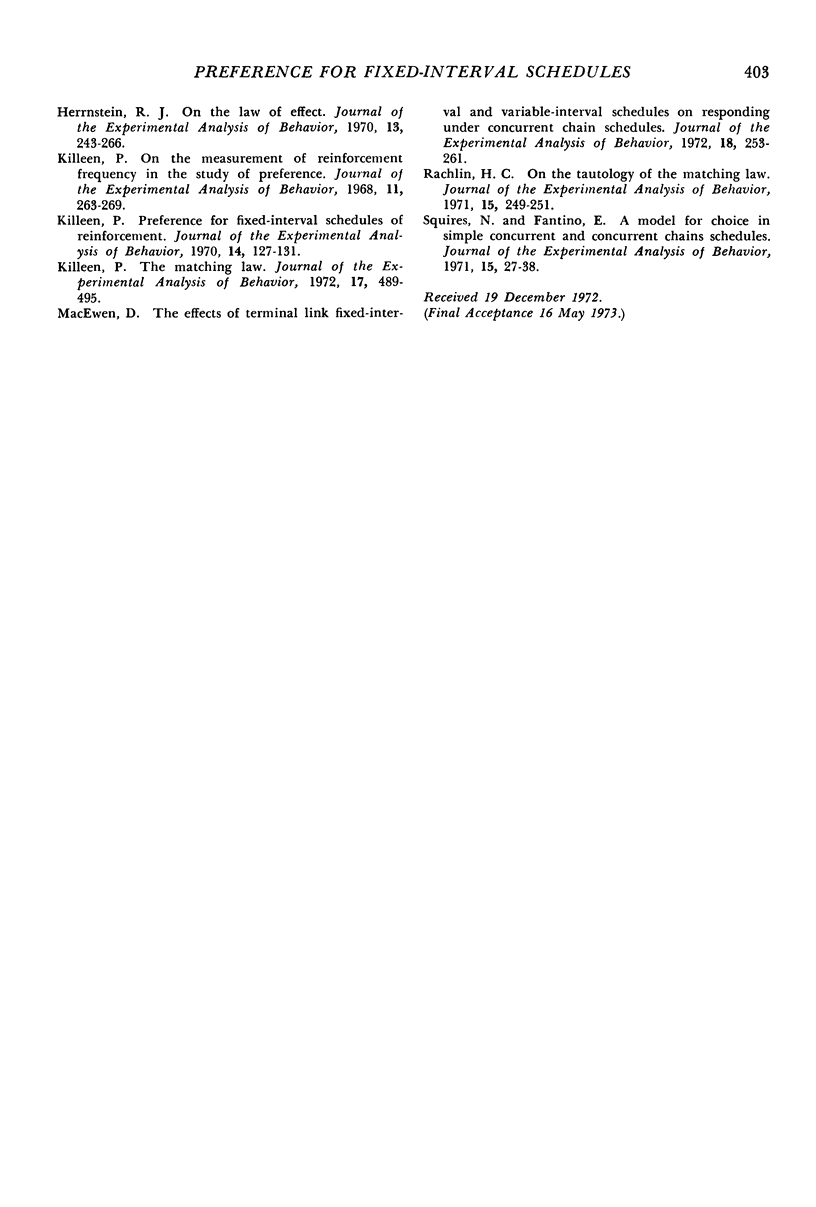
Selected References
These references are in PubMed. This may not be the complete list of references from this article.
- Baum W. M., Rachlin H. C. Choice as time allocation. J Exp Anal Behav. 1969 Nov;12(6):861–874. doi: 10.1901/jeab.1969.12-861. [DOI] [PMC free article] [PubMed] [Google Scholar]
- Davison M. C. Preference for mixed-interval versus fixed-interval schedules. J Exp Anal Behav. 1969 Mar;12(2):247–252. doi: 10.1901/jeab.1969.12-247. [DOI] [PMC free article] [PubMed] [Google Scholar]
- Davison M. C. Preference for mixed-interval versus fixed-interval schedules: number of component intervals. J Exp Anal Behav. 1972 Mar;17(2):169–176. doi: 10.1901/jeab.1972.17-169. [DOI] [PMC free article] [PubMed] [Google Scholar]
- Duncan B., Fantino E. Choice for periodic schedules of reinforcement. J Exp Anal Behav. 1970 Jul;14(1):73–86. doi: 10.1901/jeab.1970.14-73. [DOI] [PMC free article] [PubMed] [Google Scholar]
- Fantino E. Choice and rate of reinforcement. J Exp Anal Behav. 1969 Sep;12(5):723–730. doi: 10.1901/jeab.1969.12-723. [DOI] [PMC free article] [PubMed] [Google Scholar]
- HERRNSTEIN R. J. SECONDARY REINFORCEMENT AND RATE OF PRIMARY REINFORCEMENT. J Exp Anal Behav. 1964 Jan;7:27–36. doi: 10.1901/jeab.1964.7-27. [DOI] [PMC free article] [PubMed] [Google Scholar]
- Herrnstein R. J. On the law of effect. J Exp Anal Behav. 1970 Mar;13(2):243–266. doi: 10.1901/jeab.1970.13-243. [DOI] [PMC free article] [PubMed] [Google Scholar]
- Killeen P. On the measurement of reinforcement frequency in the study of preference. J Exp Anal Behav. 1968 May;11(3):263–269. doi: 10.1901/jeab.1968.11-263. [DOI] [PMC free article] [PubMed] [Google Scholar]
- Killeen P. Preference for fixed-interval schedules of reinforcement. J Exp Anal Behav. 1970 Sep;14(2):127–131. doi: 10.1901/jeab.1970.14-127. [DOI] [PMC free article] [PubMed] [Google Scholar]
- Killeen P. The matching law. J Exp Anal Behav. 1972 May;17(3):489–495. doi: 10.1901/jeab.1972.17-489. [DOI] [PMC free article] [PubMed] [Google Scholar]
- Macewen D. The effects of terminal-link fixed-interval and variable-interval schedules on responding under concurrent chained schedules. J Exp Anal Behav. 1972 Sep;18(2):253–261. doi: 10.1901/jeab.1972.18-253. [DOI] [PMC free article] [PubMed] [Google Scholar]
- Rachlin H. On the tautology of the matching law. J Exp Anal Behav. 1971 Mar;15(2):249–251. doi: 10.1901/jeab.1971.15-249. [DOI] [PMC free article] [PubMed] [Google Scholar]
- Squires N., Fantino E. A model for choice in simple concurrent and concurrent-chains schedules. J Exp Anal Behav. 1971 Jan;15(1):27–38. doi: 10.1901/jeab.1971.15-27. [DOI] [PMC free article] [PubMed] [Google Scholar]


